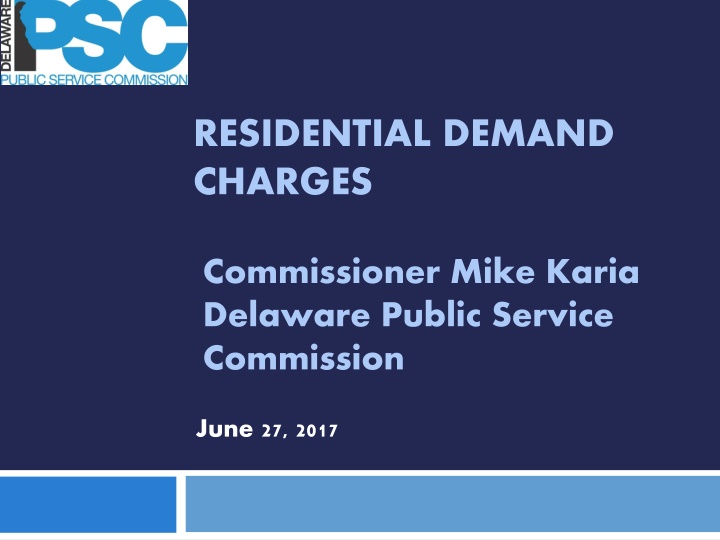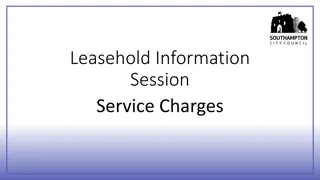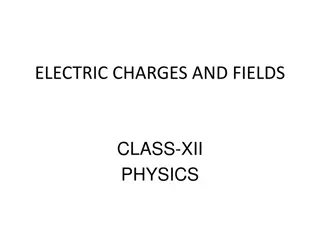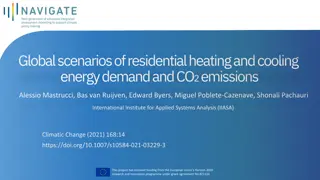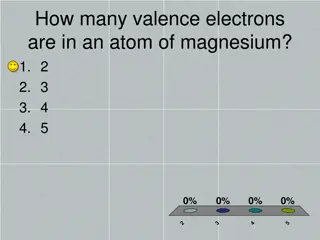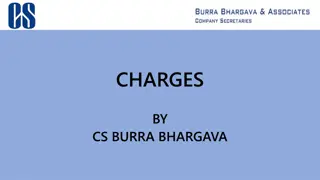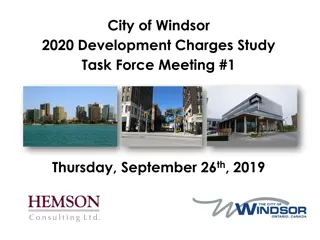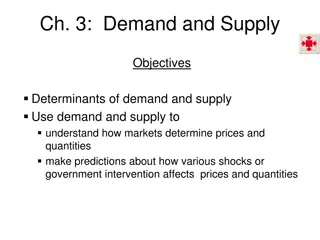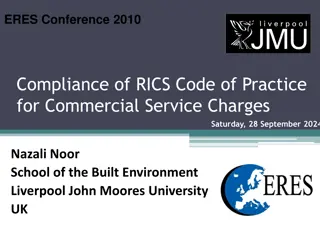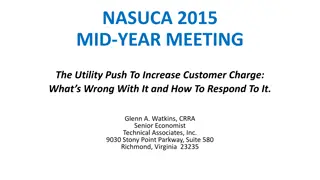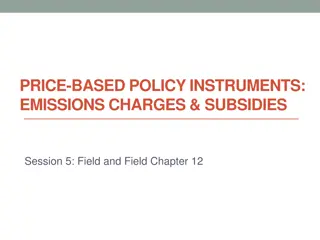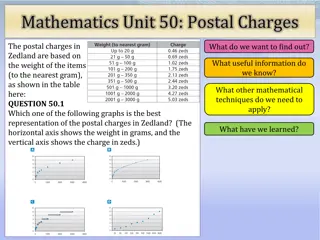Residential Demand Charges and Rate Design Strategies
Effective management of residential demand charges is crucial for utilities to recover costs efficiently. Initiatives such as time-of-use rates and demand charges offer solutions to align costs with peak demand, sending proper price signals to customers. By implementing innovative rate design strategies, utilities can create a fair and sustainable billing system that benefits both customers and the grid.
Download Presentation

Please find below an Image/Link to download the presentation.
The content on the website is provided AS IS for your information and personal use only. It may not be sold, licensed, or shared on other websites without obtaining consent from the author.If you encounter any issues during the download, it is possible that the publisher has removed the file from their server.
You are allowed to download the files provided on this website for personal or commercial use, subject to the condition that they are used lawfully. All files are the property of their respective owners.
The content on the website is provided AS IS for your information and personal use only. It may not be sold, licensed, or shared on other websites without obtaining consent from the author.
E N D
Presentation Transcript
RESIDENTIAL DEMAND CHARGES Commissioner Mike Karia Delaware Public Service Commission June 27, 2017
Rate Design Mismatch 2 The utility incurs fixed costs and variable costs to serve customers. Today, the majority of costs are recovered through variable charges. Costs should align with the reason the utility incurs costs Cost Causation Principle- costs are to be allocated to those who cause the costs to be incurred and reap the resulting benefits. NARUC v. FERC, 475 F. 3d 1285. 120 100 80 60 Variable Costs Fixed Costs 40 20 0 Costs to Serve Customer How Customers Pay
Arizona Dockets 3 Salt River Project ( SRP ), in AZ, implemented a Non Coincident Peak (NCP) demand charge in 2014 for solar customers. The rate was approved by their independent board, not the Arizona Corporation Commission. UniSource Energy Services proposed a demand charge, mandatory for solar customers, that was rejected by an Administrative Law Judge on July 22, 2016 pending the outcome of a proceeding that is meant to determine a value that solar production brings to the grid. Arizona Public Service proposed a mandatory residential demand charge but in a settlement agreed to optional time of use and demand rates for residential customers.
The Problem 4 Most utility investments are made to serve ratepayers reliably at the system peak. What is the proper method to calculate and bill for each ratepayer s contribution to peak, taking into account the fact that different components of the distribution system may peak on different days throughout the year? How can rates send proper and timely price signals? How can we allow Net Energy Metering customers to avoid costs that they allow the utility to avoid?
The Solutions 5 Time of Use Rates Demand Rates Status Quo
Time of Use Rates 6 Time-Of-Use Rates Charges different rates for usage during different times of the day. Can be used for entire bill or just generation. Costs recovered based on energy use (volumetric). Meant to correlate use with system peaks
The Solutions 7 Demand Charges Different types Non-Coincident Demand Charge: Highest peak hour of the month regardless of system peak Typical Demand Charge Coincident Peak Demand Charge Charge during certain pre-determined system peak hours. Custom Design With Advanced Metering Infrastructure, more granular rates can be designed to accurately capture contribution to system peak Portion of costs recovered with demand charge recovered based on demand value (neither fixed nor volumetric). Meant to correlate use with system peaks.
The Solutions 8 Status-Quo Charge one rate regardless of time of day or year Costs recovered based on energy use (volumetric) The compromise: Voluntary Time of Use and Voluntary Demand Rates
Pro/Con: Time-of-Use Rates 9 Pros: Depending on design, may align more expensive periods of wholesale energy with higher retail charges. May reduce use at peak. Particularly applicable for vertically-integrated utilities where T, D, & G peaks are all similar. Cons: Not reflective of costs incurred to serve load. Not in accordance with cost-causation principle. No incentive for end-users to shift their use away from system peaks.
Pro/Con: Demand Charges 10 Cons: Non-coincident peak demand charges Difficult to understand Difficult for customers to control Likely not granting any credit for any aid to distribution grid that Distributed Energy Resources do provide. Need AMI metering to implement more granular demand charge options that would be in accordance with the cost-causation principle. Pros: With AMI Deployed, Demand Charges can be tailored to send granular price signals. If non-coincident demand charge used, allows utilities to recover significant portion of fixed costs in a (proxy) fixed-costed fashion.
Pro/Con: Status-Quo 11 Cons: Not reflective of costs incurred to serve load. Not in accordance with cost-causation principle. No incentive for end- users to shift their use away from system peaks. Pros: Simple for Customers/Easy to understand. Customers like flat rate service Won t feel as if they re getting punished for using during certain times of the day.
Delawares Attempts 12 In Delaware, there have been multiple attempts to develop new rate designs None of the proposals survived the discovery and working group phase So none of the proposals were presented to the Commissioners
Delawares Attempts 13 2007 Regulation Docket 59: Investigation into the revenue decoupling mechanisms for electric and gas utilities. Media coverage focused on Use Less Pay More The Legislature changed its mind and withdrew the regulation 2009 Docket 09-276T and 09-277: The Application of Delmarva Power for approval of a Modified Fixed Variable Rate Working groups never reached a consensus and the new rate design was never brought before the commission for a vote
Delawares Attempts 14 2009 Docket 09-414 Decoupling Decoupling was not included in the issues brought before the Commission 2013 Docket 13-384: The Application of Delmarva Power for approval of forward looking rate plan (FLRP) Working groups never reached a consensus and the rate design was never brought before the commission for a vote
